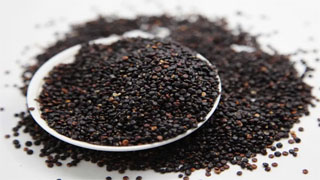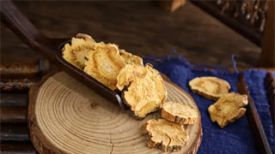
1. Alias
Shui Lao Zi, Lao Cao Shi, He Liao Zi.
2. Plant morphology
Annual herb, 1-3 meters tall. The stem is upright, hollow, jointed, multi branched, and densely covered with thick hairs. Leaves large, alternate, broadly ovate or ovate, apex gradually pointed, base rounded or slightly heart-shaped, entire margin shallow wavy, petiole long; The tunica vaginalis is covered with hairs, and the tip often enlarges into a small, spreading or outward protruding piece. The inflorescence is terminal, slightly drooping, and covered in soft hairs; The bracts are sheath shaped, with long hairs on the outside and no hairs on the inside, and are broadly ovate in shape; Flowers white or pink, with a 5-lobed corolla, oval shaped, hairless; 7-8 stamens, slightly extending outside the flower; The ovary is slightly round and flat, and the style is 2-lobed. The achene is flat, slightly round, slightly concave in the middle of both sides, brownish black, glossy, and enclosed in the perennial flower bed. The flowering period is from April to June, and the fruiting period is from July to August.
3. Origin distribution
Born in roadside and waterfront wetlands. Distributed throughout the north and south of the country; Medicinal herbs are mainly produced in the three northeastern provinces, Inner Mongolia, Hebei and other areas.
4. Harvesting and processing
Cut the fruit ears from August to October, dry them in the sun, knock off the fruits, and remove impurities.
5. Characteristics of medicinal herbs
Flat circular, with a diameter of 2-3 millimeters and a thickness of 1-1.5 millimeters. The surface is brownish black or reddish brown, glossy, with slight indentations on both sides. The center is slightly raised in a linear shape, and the tip has a spike like raised column base. The base has a light brown slightly raised fruit stalk mark, and sometimes there is residual membranous flower cover. The skin is thick and hard. The seeds are flattened and round, with a light brown membranous seed coat; The endosperm is powdery, almost white in color, and the embryo is small and curved, slightly circular. The air is weak, the taste is light, and it is best to have a full and rich color, red and black.
6. Sexual Taste Returning to the Classics
Slightly cold in nature, salty in taste. Return to the liver meridian and stomach meridian.
7. Effect and Function
Relieve blood stasis and stasis, invigorate the spleen and eliminate dampness, and relieve pain throughout the body. It belongs to the category of blood activating and stasis removing drugs, which are used to break blood and relieve symptoms.
8. Clinical application
Treat symptoms such as abdominal distension, edema, stomach pain, lack of appetite, bloating, burning eyes, sores, and scrofula. Take decoction orally with a dosage of 15-30 grams, apply an appropriate amount externally, and apply ointment to the affected area. Do not use it for those without blood stasis or those with stomach deficiency and cold.
9. Pharmacological research
It has diuretic, antibacterial, anti-tumor and other effects. Mice were orally administered with decoction, tinctures or petroleum ether extracts of water red flower seeds every day for 10 consecutive days, which had a certain inhibitory effect on Ehrlich ascites carcinoma (ascites type and solid type) and sarcoma-S180, but its effect was unstable and further confirmation was needed.
10. Chemical composition
Mainly containing anthocyanins, quercetin, etc. It also contains 41.51% starch.
11. Usage taboos
Caution should be exercised when taking medication for those with no blood stasis or spleen and stomach deficiency cold.
12. Compatibility prescription
① To treat abdominal distension: Take one bowl of saffron or water, three bowls of water, and simmer over low heat to make a paste. Measure the size of the lump and spread it out, then mix it with wine and take the paste. Avoid meat, fishy and greasy. ("Baoshou Hall Experience Formula")
② Treating stomach pain: Take 9-15g of water red flower seeds or whole grass, decoct in water and take orally. (Zhejiang Medicinal Plant Chronicles)
③ Splenomegaly and bloating: 1000g of water red flower seeds, water torture ointment, 1 tablespoon each time, twice a day, taken with yellow wine or boiling water. Spread the water red flower seed ointment on the affected area and apply it externally. Change the dressing once a day. (Handbook of Chinese Herbal Medicine in Xinjiang)
④ Chronic hepatitis and cirrhosis ascites: 15g of water red flower seeds, 12g of large abdominal skin, 9g of black gall, decoct in water and take orally. (Handbook of Chinese Herbal Medicine in Xinjiang)
⑤ Treatment for Conjunctivitis: Take 9g of Scutellaria baicalensis, 9g of Scutellaria baicalensis, 12g of Chrysanthemum, 6g of Gentiana scabra, decoct in water and take orally. (Qingdao Herbal Medicine Handbook)
⊙ The content of the article is for clinical reference only. Non TCM professionals are not allowed to test drugs.


